Georgia WWSCAN Biweekly Update 9/15/2023
Welcome to the bi-weekly update for WWSCAN partners in Georgia! The samples provided up through 9/11/23 have been processed in the lab and data are on the site at data.wastewaterscan.org.

If you notice any bugs on the site or have any comments about it, please continue to send your feedback via email Amanda Bidwell at albidwel@stanford.edu. We thank you for your partnership!
Infectious Disease Target Review
Currently monitoring SARS-CoV-2, IAV, IBV, RSV, HMPV, Norovirus GII, & Mpox
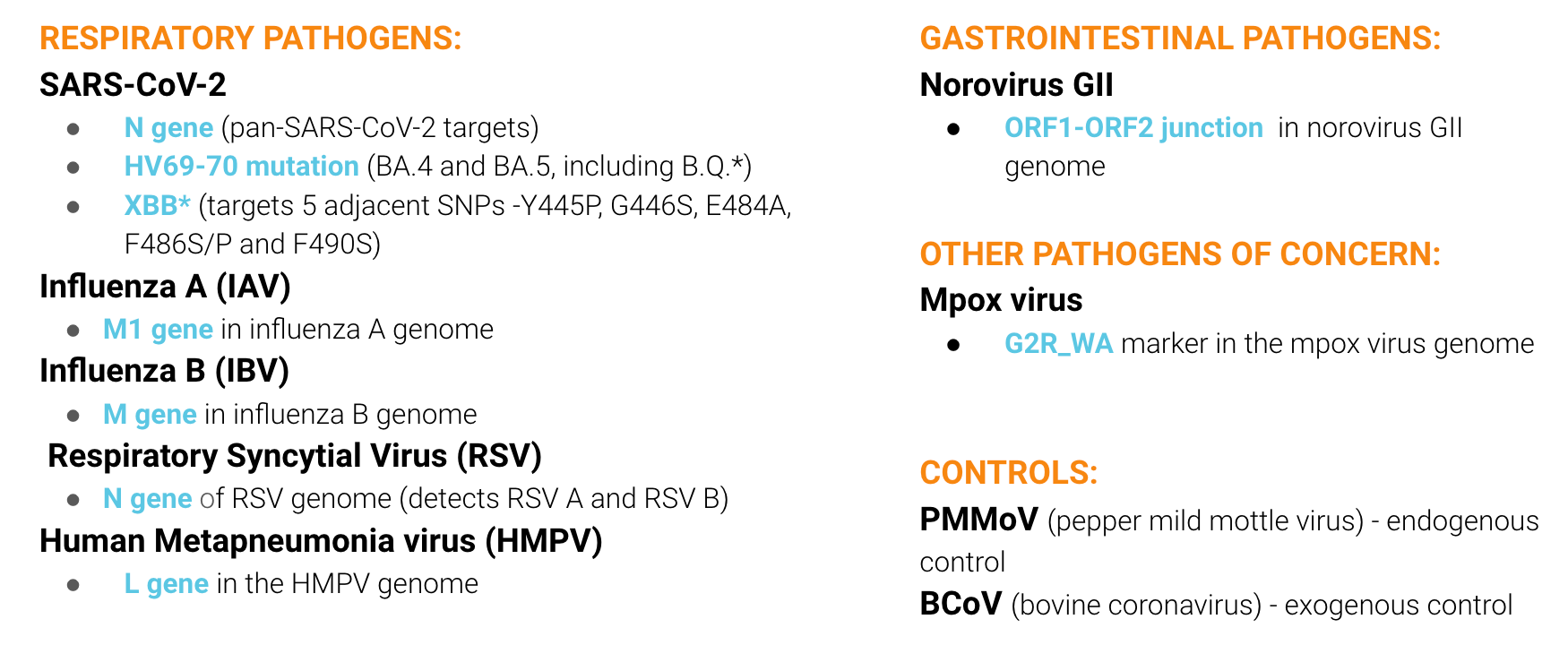
The methods for our assays are in the public domain. You can access them using these QR codes:

New Pathogen Announcement
We are now adding Enterovirus D68, Human Adenovirus Group F, Rotavirus, Candida auris, and Hepatitis A to WWSCAN
During the August 2023 stakeholder meeting we announced we would be rolling out 5 new pathogen targets to all WWSCAN sites including our 8 Georgia sites. We are excited to announce that after a rigorous validation process we have rolled out the following new targets to all WastewaterSCAN sites as planned: Enterovirus D68, Adenovirus group F (40 and 41), Rotavirus, Candida auris, and Hepatitis A. Parainfluenza data are now available for a subset of sites, and will expand to all sites in the coming weeks. As part of this change, we are also sunsetting measurements of SARS-CoV-2 variant markers: HV 69-70 and XBB*. XBB* will sunset in WWSCAN plants in the coming weeks. You can read about the methods we are using to measure the new targets in these two preprints: first preprint, second preprint.
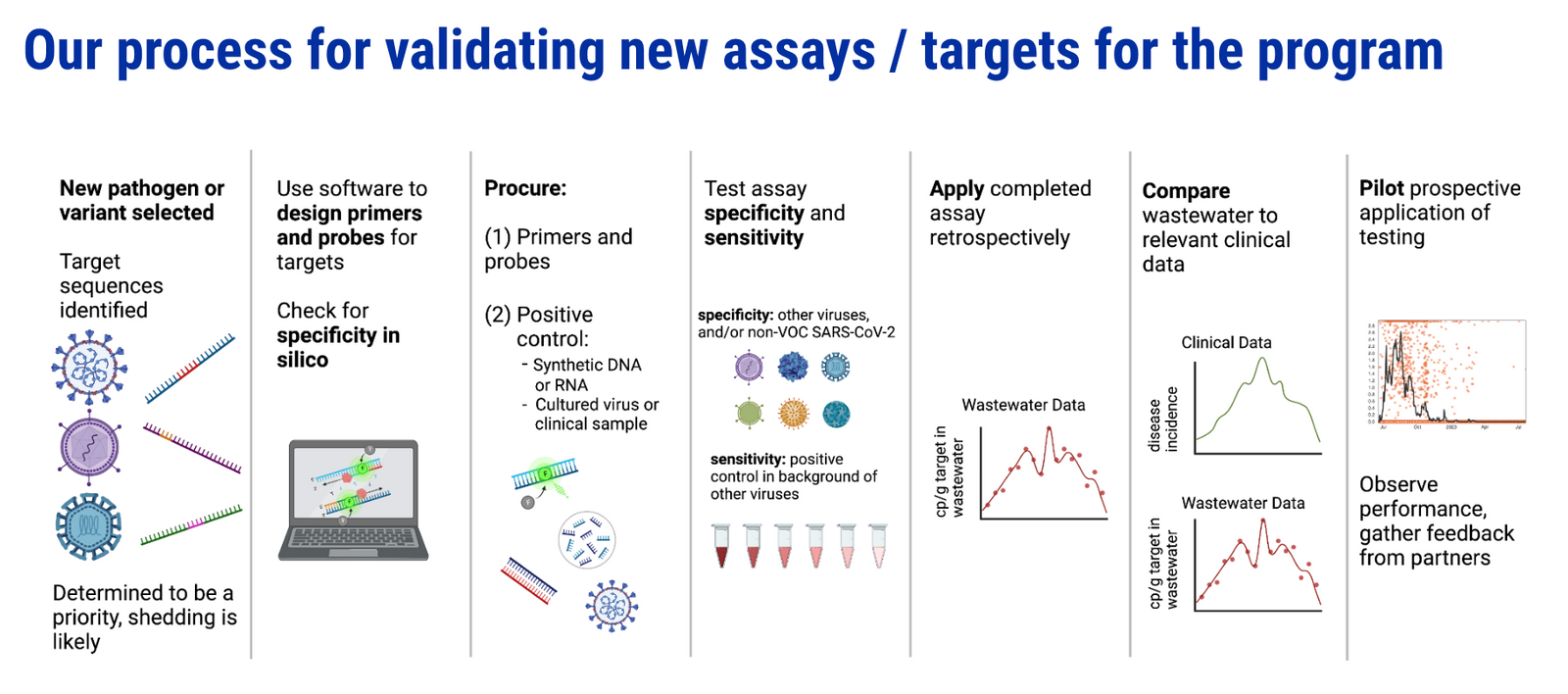
Data is now available in the staging environment on our website, and are not yet accessible on the main dashboard. This dedicated environment will serve as a valuable resource, offering a place for our partners to view and respond to the data for these new targets during the rollout process. You can access the staging environment by following this link, which is not password protected but is only being distributed to project partners at this time. As a reminder, the data will be made publicly available on our dashboard at data.wastewaterscan.org on September 25, 2023. If you have questions about the staging site, please contact Amanda Bidwell at albidwel@stanford.edu.

Wastewater Categories
Updates to the website will categorize sites based on Level, Trend, and Detection Frequency
At a special stakeholder call we reviewed analysis being conducted to develop a clear way to communicate what wastewater is telling us about community disease circulation.
The new Wastewater Categories will use the following tools for interpretation:
- Levels tell us whether wastewater concentrations are relatively lower or higher
- Trends tell us how wastewater concentrations are changing
- Frequency of detection is important for rare targets
We will also use information about the start and end of wastewater events for seasonal pathogens using methodology described here. Here is a link to a recording of the presentation.
COVID-19
SARS-CoV-2 and VariantsGII, & Mpox
SARS-CoV-2 N gene RNA concentrations have slightly decreased over the last two weeks to range between 40,000 and 200,000 copies per gram.
The dark gray line in each chart is a population-weighted aggregated trend line for all 8 Georgia sites when the data is normalized by PMMoV. "National levels" visually benchmark where concentrations fall compared to previously recorded measurements for each pathogen. The aggregated line in the chart below shows that SARS-CoV-2 N gene RNA concentrations among Georgia sites are approaching the middle third level of all concentrations measured in the last year. Additional information on the methodology behind this trend line is available here in the "How are aggregated trendlines determined?" section. More details can be found under the "How are national levels determined?" section here.
For most targets, we are also including a trend analysis of their concentrations in wastewater solids (normalized by PMMoV) based on the most recent estimates compared to the recent past. In order to calculate a trend, we require 3 points over the last 21 days. We test for linear trends between log10-transformed concentration (target/PMMoV) and time; the trend must be classified as statistically significant (p<0.1). To read more about our methods for trend analysis click the link here. Analysis of SARS-CoV-2 concentrations shows there is no trend across 7 Georgia sites. There is a significant downward trend at Johns Creek.

Early in 2023, WWSCAN started testing for XBB* and these results are available to view by selecting 'SARS-CoV-2 View by Variant' on data.wastewaterscan.org. For Georgia sites, data dates back to early February 2023 and can be seen in the chart below. The ratio of the XBB* mutations/N across all Georgia plants is shown in the left chart below. As the ratio reaches 100%, it suggests that all the SARS-CoV-2 genomes in wastewater have the XBB* mutations. These estimates have not changed much since our last update, and data indicate that the average ratio XBB* mutations/N is ~75% but has ranged from 40-100% recently. This suggests the majority of infections across the communities are caused by XBB*. The right chart below shows the ratio of the BA.5, BA.4, and BQ* mutation/N across all Georgia plants. Use this link to view the chart on the site. It can be read the same way as the XBB* chart. The average ratio is close to 0%. Note that our XBB* assay will also detect XBB.1.16, XBB.1.9, FD.2 (XBB.1.5.15.2*), and EG.5. However, the XBB* targets are NOT present in BA.2.86.
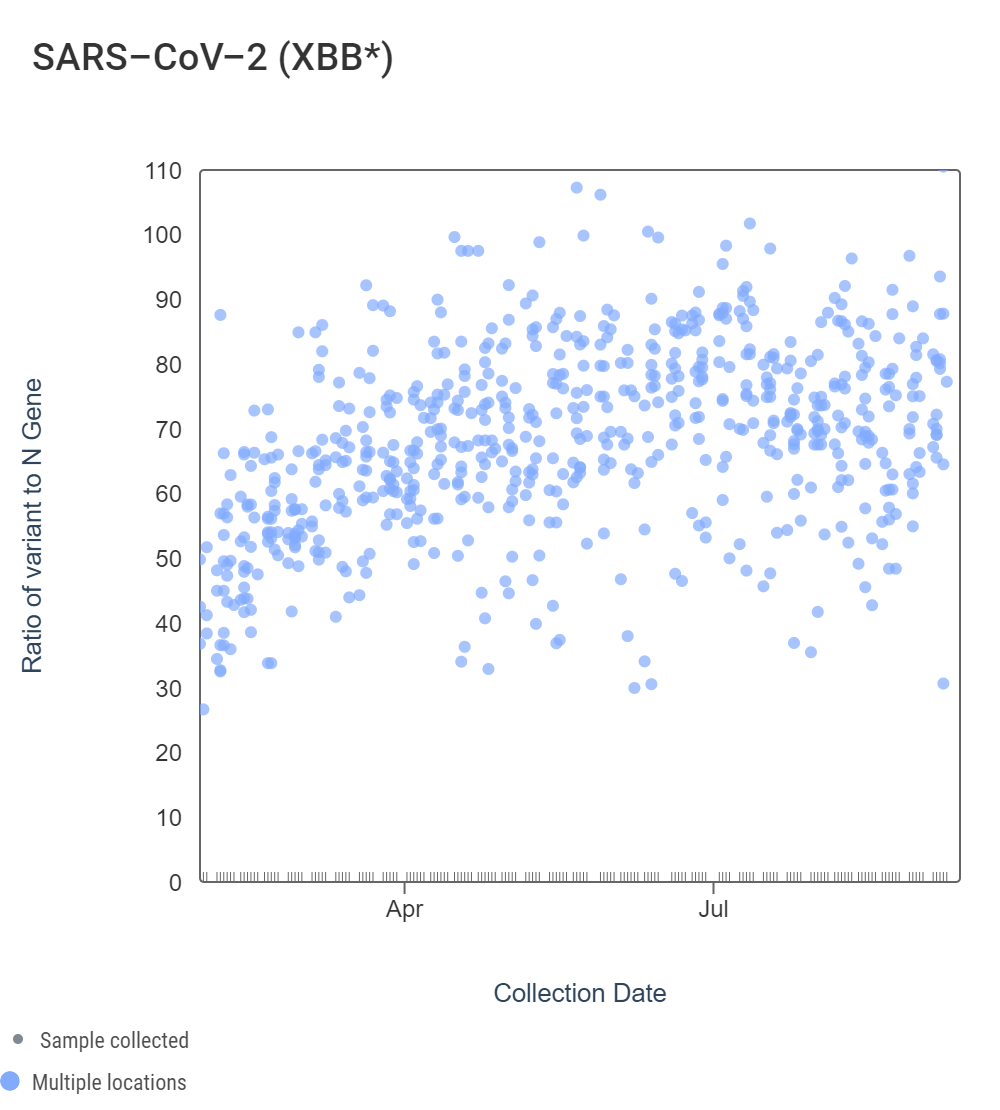

Other Respiratory Targets
Influenza A & B, Respiratory Syncytial Virus, and Human metapneumovirus
RSV RNA concentrations over the last two weeks have been less than about 8000 copies/g. RSV has been detected more frequently compared to a few months ago at a majority of the sites except Utoy Creek, according to this heat map. An analysis of RSV RNA concentrations showed there is no trend at all 8 Georgia sites.

Influenza A (IAV) RNA has been detected at low concentrations at Little River and South River within the last two weeks. An analysis of IAV RNA concentrations showed there is no trend across the 8 Georgia sites.
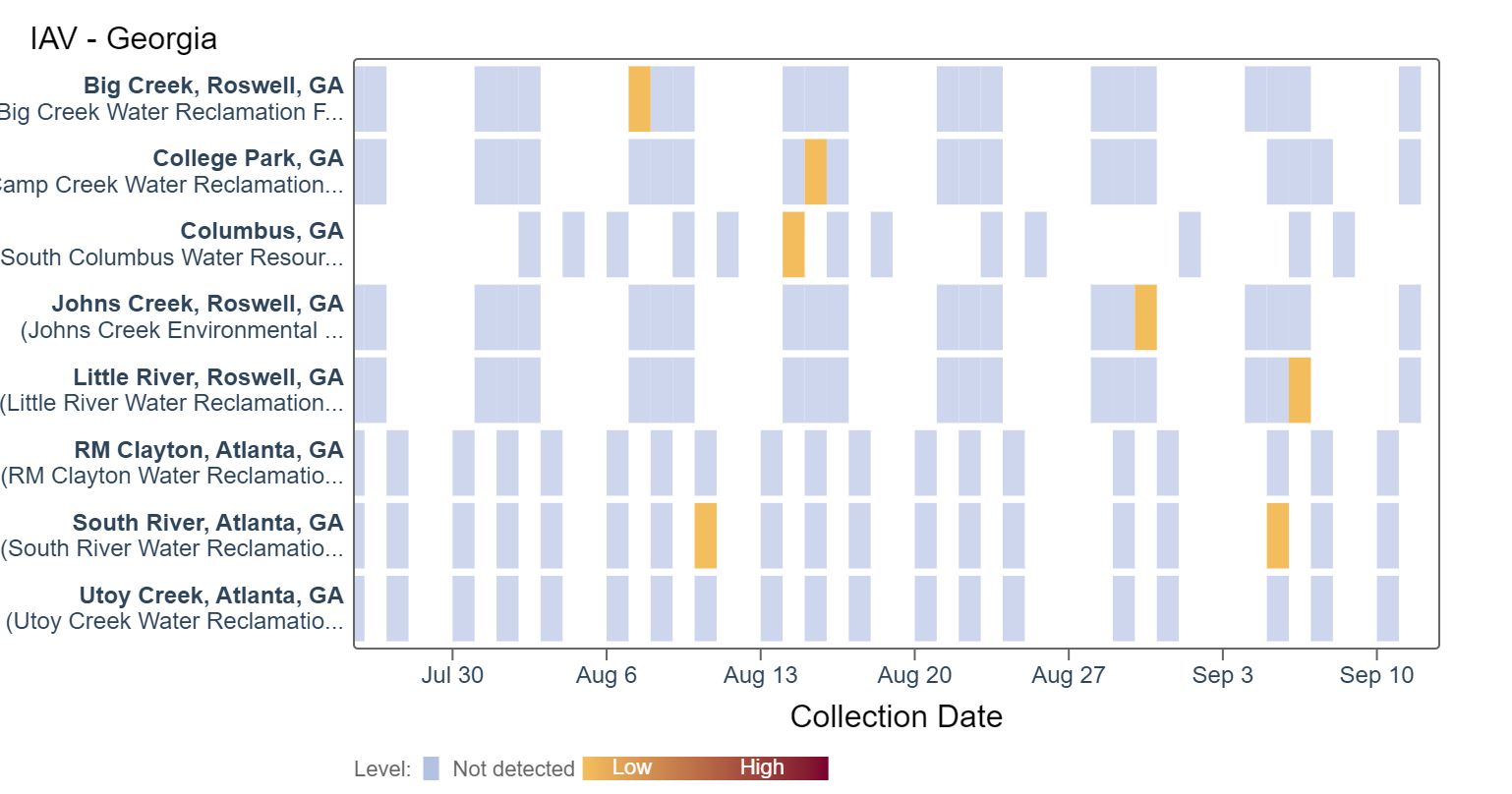
Influenza B (IBV) RNA has rarely been detected at most sites. Based on the heat map below, IBV has more frequently been detected at the Columbus site, where concentrations are less than 2400 copies/g. Trend analysis of IBV RNA concentrations showed there is no trend across the 8 Georgia sites.
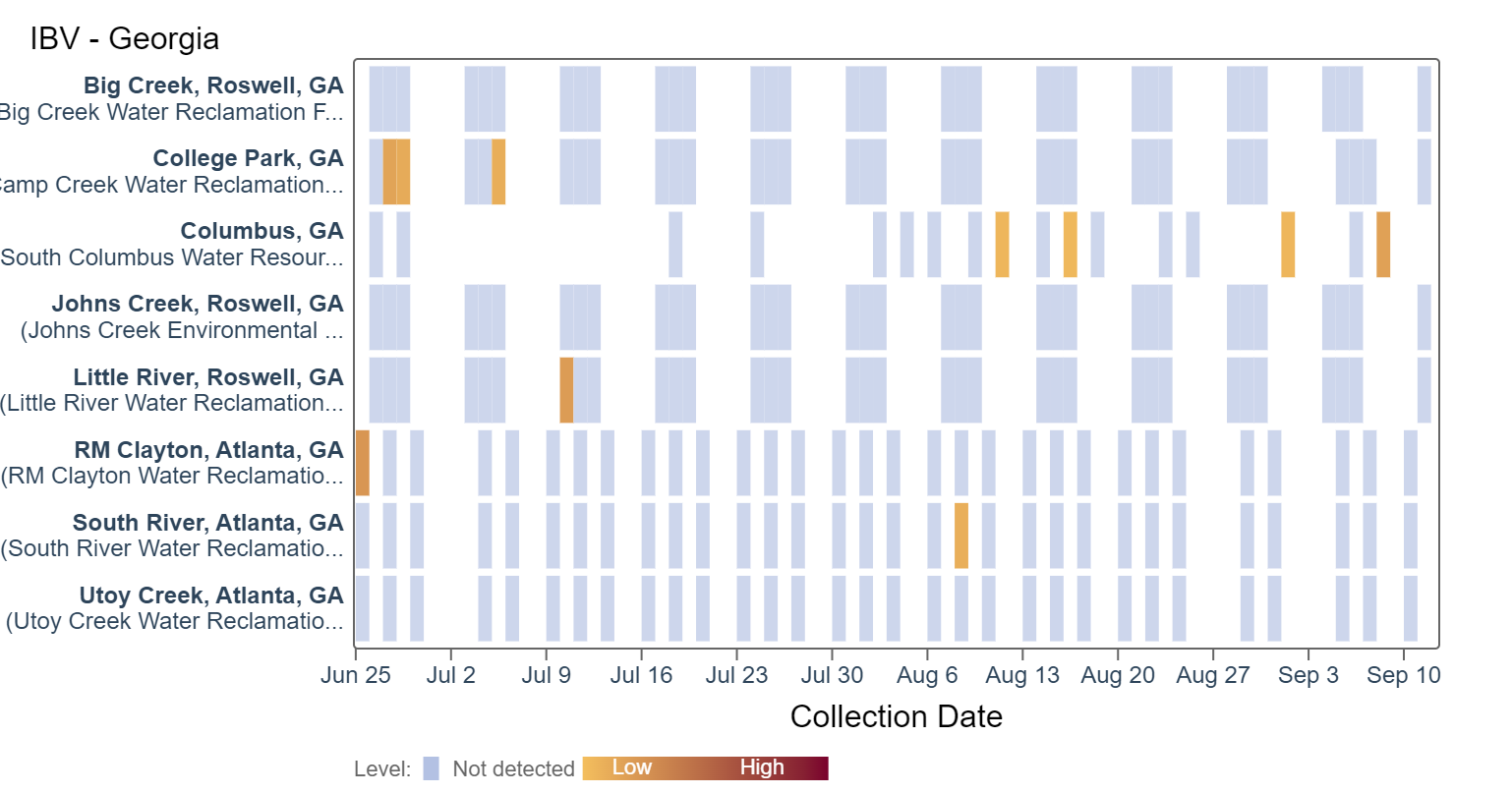
HMPV (human metapneumovirus) RNA has been detected sporadically across Georgia sites at lower concentrations. It has not been detected at the College Park, Little River, or Columbus sites within the last two weeks. The trend analysis of HMPV RNA concentrations showed there is no trend across the 8 Georgia sites.
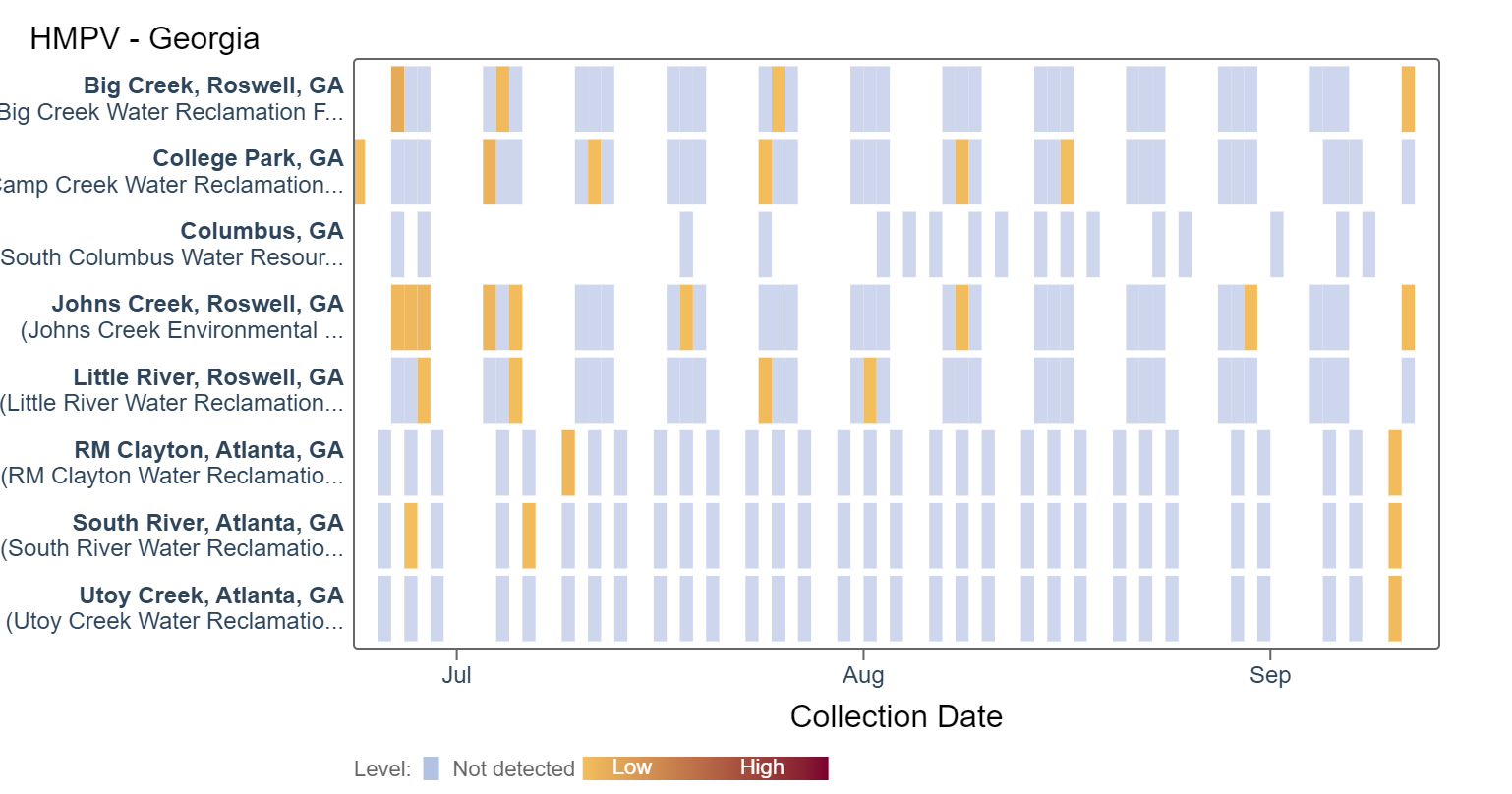
Gastrointestinal Targets
Norovirus GII
Norovirus GII (HuNoV GII) RNA concentrations are between 930,000 and 4,400,000 copies/g and are in the bottom third level for all 8 sites. An analysis of HuNoV GII RNA concentrations showed there is no trend across the Georgia sites except for a significant downward trend at Utoy Creek.
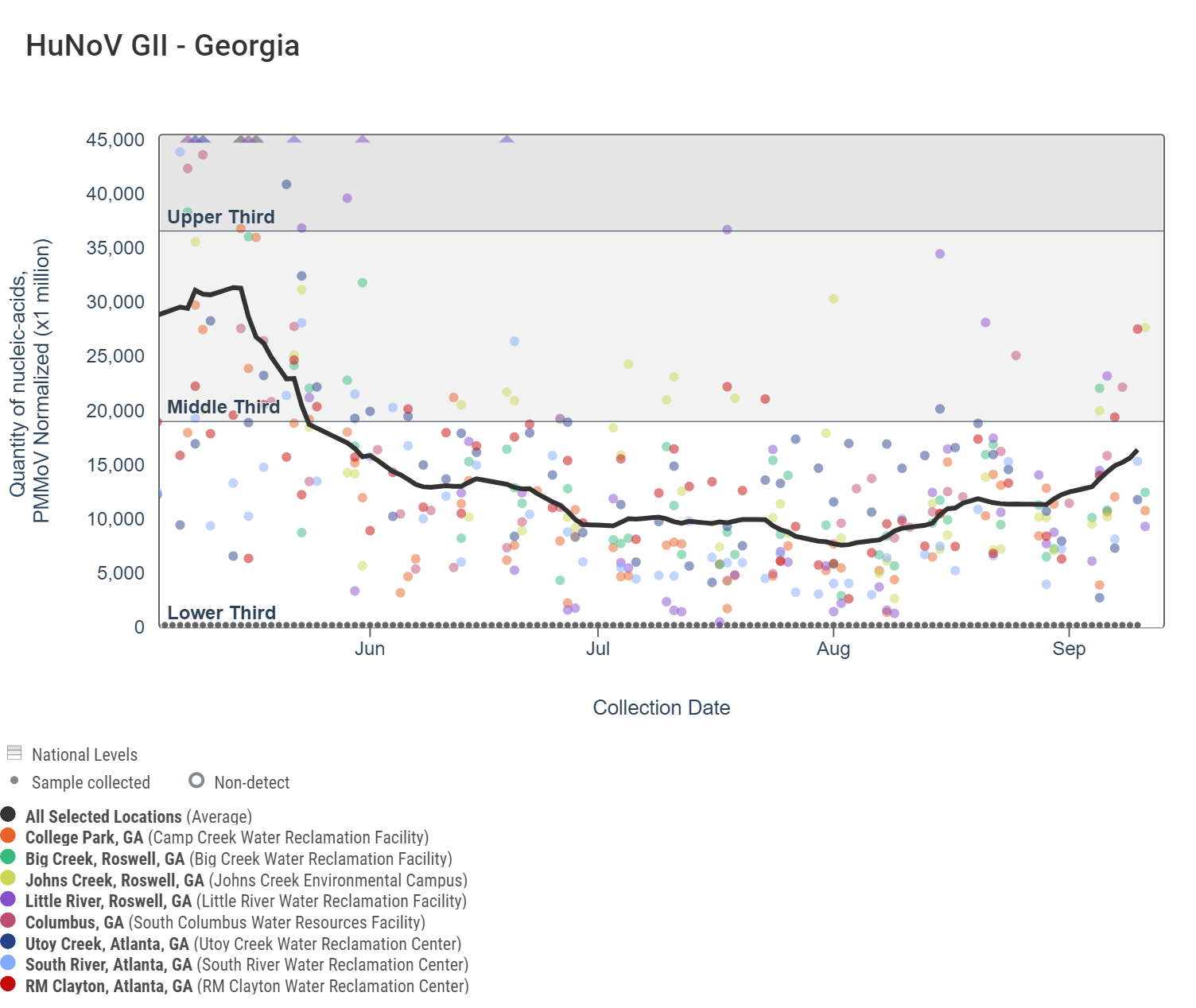
Other Pathogens of Concern
Mpox
Results are non-detect for mpox for the past 21 days at Georgia plants. This heat map shows data since July 2022. Sites are labeled in the rows and each date a sample was collected as a column. The color blue means the sample was non-detect for mpox DNA and the colors get darker with higher concentrations.
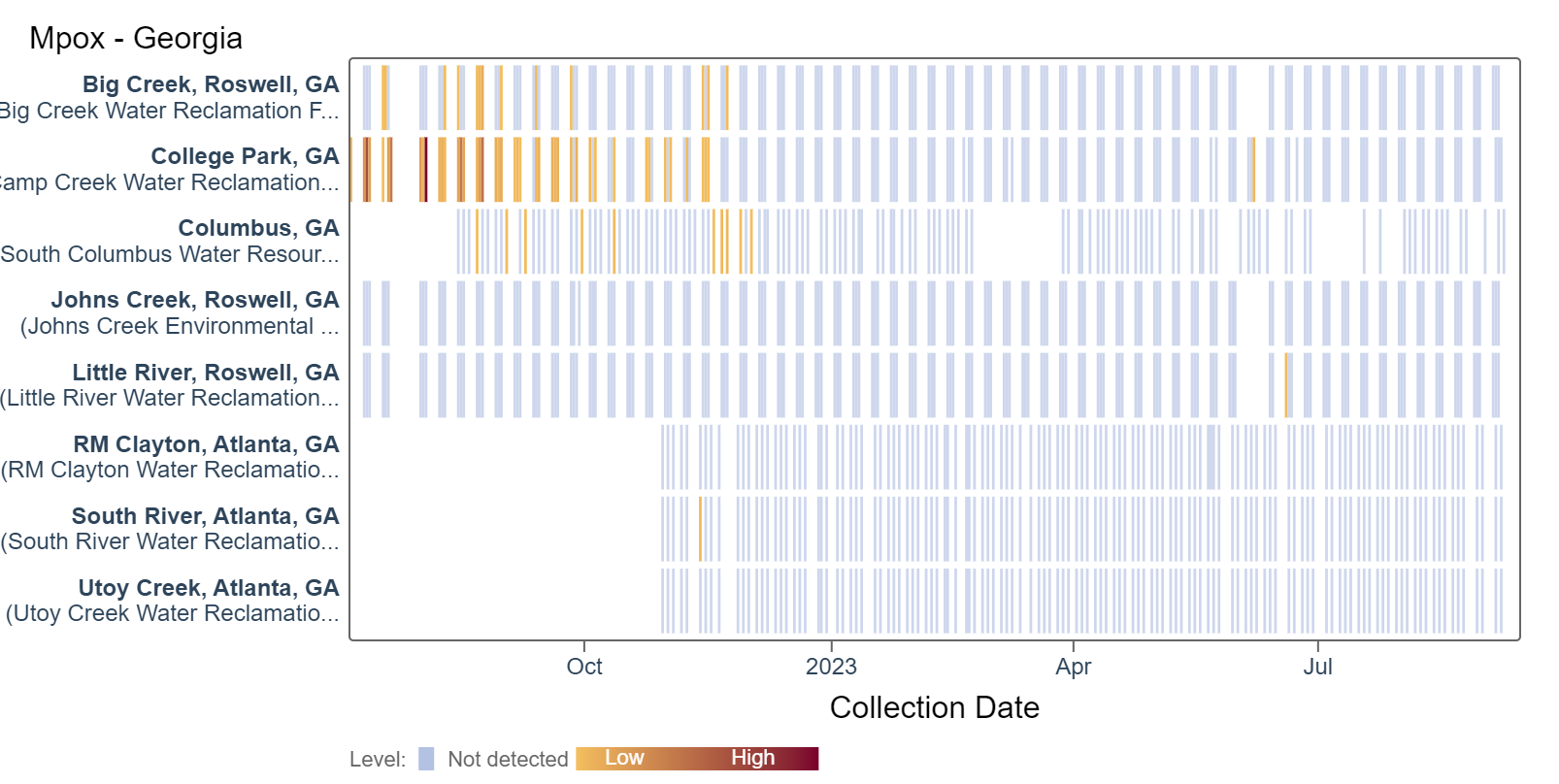
Related News
The next stakeholder meeting will take place Friday, October 13th @ 12 PM EST.
